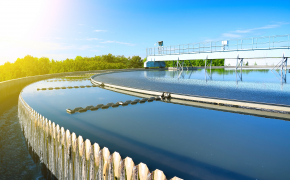SCOTUS: Clean Water Act Permits Required for Some Releases into Groundwater
The U.S. Supreme Court held today, in a much-anticipated ruling, that the Clean Water Act’s (CWA) requirement to obtain a National Pollutant Discharge Elimination System (NPDES) permit, can apply to certain releases of pollutants that reach surface water through groundwater. The case, County of Maui v. Hawai’i Wildlife Fund, No. 18-260, 2020 WL 1941966, announced for the first time that an indirect addition of pollutants into surface waters requires an NPDES permit when it “is the functional equivalent of a direct discharge.” This novel, open-ended “functional equivalent” test will require EPA, courts, and litigants to work out over the coming months and years precisely what indirect additions require NPDES permits.
The Justices Find Their Own Way
Justice Breyer, writing for a six-Justice majority, rejected both the Ninth Circuit’s and the litigants’ proposed tests to define the circumstances under which the CWA requires a permit. The Ninth Circuit held that the County of Maui’s releases of treated wastewater from injection wells that reached the Pacific Ocean via groundwater required a permit because they were “fairly traceable” back to a point source. The respondent environmental groups that sued the County contended that the Court could retain the Ninth Circuit’s “fairly traceable” standard, albeit with the additional requirement that the original point source must be the “proximate cause” of pollutants’ addition to surface waters.
The majority found itself unable to square the Ninth Circuit’s “fairly traceable test” and Respondents’ proximate causation gloss with the CWA’s structure, and rejected both. The Court had concerns that a “fairly traceable standard would be overly broad, resulting in a requirement to obtain an NPDES Permit “in surprising, even bizarre circumstances.” Justice Breyer also expressed concerns that the traceability test would eviscerate the CWA’s core distinction between point source and non-point source pollution. The Act requires permits for only the former and reserves to the states authority to regulate the latter.
The Court also rejected the County of Maui’s and the Solicitor General’s proposed standards. The County had argued that the CWA requires a permit only when the original point source is the direct “means of delivering” pollutants to surface waters. The Solicitor General, in support of the County, urged that the CWA categorically excludes from the NPDES program all releases of pollutants into groundwater. The Court found that both of these interpretations were inconsistent with the statute’s text and invited dischargers to evade the CWA’s permitting requirement simply by relocating their discharges.
Functional Equivalence Is Born
Having rejected these standards seeking to establish clear lines defining discharges requiring permits, the Court announced that the CWA requires NPDES permits “when there is a direct discharge from a point source into navigable waters or when there is the functional equivalent of a direct discharge” (emphasis added). This functional equivalence test, Justice Breyer explained, “reflect[s] Congress’ basic aim to provide federal regulation of identifiable sources of pollutants entering navigable waters without undermining the States’ longstanding regulatory authority over land and groundwater.”
The Court then identified seven—nonexclusive—factors “that may prove relevant” to assessing whether the functional equivalent of a discharge has occurred:
- transit time;
- distance traveled;
- the nature of the material through which the pollutant travels;
- the extent to which the pollutant is diluted or chemically changed as it travels;
- the amount of pollutant entering the navigable waters relative to the amount of the pollutant that leaves the point source;
- the manner by or area in which the pollutant enters the navigable waters; and
- the degree to which the pollution (at that point) has maintained its specific identify.
The majority explained that the first two factors—time and distance—“will be the most important factors in most cases, but not necessarily every case.”
More Litigation and Rulemaking Likely to Follow
Acknowledging the open-ended nature of its functional equivalent test, the Court invited both federal courts and EPA to provide further guidance on how the test will work in practice. The majority explained that the courts may arrive at a more refined standard through “the traditional common-law method” of establishing principles in individual cases. The Court also invited EPA to “provide administrative guidance” in a variety of ways, including through rulemaking.
We can thus expect, over the coming months and years, more litigation over what it means for a release of pollutants to be the functional equivalent of a discharge. By eschewing the parties’ bright line tests in favor of the nebulous and undefined functional equivalent test, the Court left the regulated community facing substantial uncertainty as to when they will need to obtain NPDES permits. The Ninth Circuit’s consideration of the Maui case on remand from the Supreme Court may provide the first look into how the Court’s new test will be applied.
Beveridge & Diamond’s Water lawyers represent clients in major cases involving emerging issues arising under the Clean Water Act and other water quality laws. B&D filed an amicus brief on behalf of a broad coalition of wastewater utilities located throughout the country in the County of Maui case and are part of a team that helps the firm’s clients develop creative solutions to water pollution control and water quality problems. If you have questions about the County of Maui case or related issues, please contact the authors.










